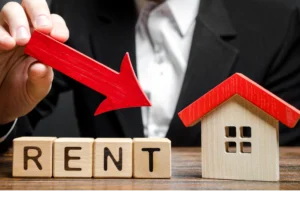How does refinancing a multifamily work?

Tax Strategies for Refinancing Multifamily Properties: A Guide
Enhance your tax efficiency while refinancing multifamily properties by strategizing your depreciation deductions. Consider cost segregation studies and categorize assets for accelerated depreciation or longer-term benefits. Keep clear records to stay compliant. Structure investments strategically for QBI deductions, supported with proper documentation.
Explore 1031 Exchange to defer capital gains taxes and reinvest wisely. Differentiate between capital improvements and repairs accurately for tax advantages. Utilize passive activity losses to reduce tax liabilities and optimize cash flow. Make the most of your property refinancing with these tax strategies tailored to your investment goals and expansion plans.
Key Takeaways
- Consider cost segregation studies for accelerated depreciation benefits.
- Distinguish between capital improvements and repairs for proper tax treatment.
- Utilize 1031 Exchange to defer capital gains taxes upon refinancing.
- Optimize passive activity loss utilization for tax efficiency.
- Maintain accurate records to support QBI deductions during refinancing.
Depreciation Deductions Optimization
To optimize depreciation deductions for multifamily properties, consider utilizing cost segregation studies to identify depreciable assets efficiently. By conducting a thorough analysis of your property’s components, you can categorize assets for accelerated depreciation, leading to increased tax savings.
Capital improvements, such as renovations or additions that enhance the property’s value, qualify for depreciation over a longer period. On the other hand, repairs, which maintain the property in its current condition, are deductible in the year they are incurred. Properly distinguishing between these two categories is important for maximizing your depreciation benefits.
Accurate record-keeping is essential to support your depreciation claims. Maintaining detailed records of all expenses related to capital improvements and repairs will not only guarantee compliance but also help you take full advantage of available deductions.
Additionally, seeking professional expertise in tax planning can further optimize your depreciation strategy. Tax professionals with experience in real estate can provide valuable insights and guidance on managing complex tax rules to maximize your tax savings.
Qualified Business Income (QBI) Deduction
Maximizing tax savings through the Qualified Business Income (QBI) deduction involves structuring investments strategically to optimize returns for multifamily property owners. The QBI deduction offers a potential 20% deduction on qualified business income, making it a valuable tool for investors looking to minimize tax liabilities and maximize profits.
Understanding the eligibility criteria and properly structuring investments to qualify for the QBI deduction is vital in accessing substantial tax savings for multifamily property owners. By effectively utilizing the QBI deduction, investors can not only minimize their tax burdens but also enhance the financial performance of their multifamily properties.
Investors should pay close attention to the specific rules and regulations governing the QBI deduction to guarantee compliance and maximize tax benefits. Proper documentation and record-keeping are essential to support claims for the deduction and withstand potential IRS scrutiny.
By integrating the QBI deduction into their tax strategies, multifamily property owners can take advantage of significant tax savings opportunities, ultimately boosting their overall investment returns. Engaging with tax professionals or advisors who specialize in real estate taxation can further aid in optimizing the use of the QBI deduction and tailoring it to specific investment goals.
1031 Exchange for Capital Gains
Utilizing a 1031 Exchange allows investors in multifamily properties to defer capital gains taxes by reinvesting proceeds into like-kind properties. This strategic maneuver enables investors to preserve capital and expand their investment portfolios without incurring immediate tax obligations.
By leveraging a 1031 Exchange, investors can effectively defer taxes on capital gains, thereby maintaining liquidity to further grow their wealth through property investments.
The 1031 Exchange serves as a potent tax-saving tool, offering investors flexibility and the potential for long-term financial growth. This mechanism not only defers capital gains taxes but also facilitates the continuous accumulation of wealth through strategic property reinvestments.
Understanding the intricacies and advantages of a 1031 Exchange is essential for multifamily property owners looking to maximize tax savings and enhance their investment opportunities.
Capital Improvements Vs. Repairs
Properly distinguishing between capital improvements and repairs is crucial for optimizing tax benefits when refinancing multifamily properties. Capital improvements involve enhancements that increase the property’s value or prolong its useful life, such as adding a new roof or renovating a kitchen. These improvements are depreciated over time, allowing you to spread the deduction over several years.
On the other hand, repairs are necessary expenses to keep the property in good operating condition, like fixing a leaky faucet or repairing a broken window. Repairs can typically be deducted in the year they occur, providing immediate tax savings.
To maximize deductions and tax savings during refinancing, accurately documenting capital improvements and repairs is essential. By properly categorizing expenses, you guarantee compliance with tax regulations and streamline the tax filing process.
Additionally, consider engaging in cost segregation studies to identify and accelerate tax deductions related to capital improvements. Understanding the tax implications of capital improvements versus repairs is key to enhancing your return on investment and achieving better financial outcomes in multifamily property refinancing.
By being diligent in classifying expenses and taking advantage of available deductions, you can optimize your tax strategy and maximize your savings.
Passive Activity Loss Utilization
To optimize tax benefits and reduce taxable income from multifamily properties, effectively utilizing passive activity losses is vital. Passive activity losses can be a valuable tool for real estate investors to offset passive income generated from multifamily properties, thereby reducing overall tax liabilities.
Strategic management of passive activity losses is pivotal for maximizing deductions and minimizing tax obligations.
Proper utilization of passive activity losses can lead to significant tax benefits and increased cash flow for investors. By understanding the passive activity loss rules and leveraging them effectively, investors can deduct losses against passive income, optimizing their tax strategies and enhancing their financial returns. This approach allows investors to enhance their tax efficiency and maximize the benefits derived from their multifamily property investments.
Frequently Asked Questions
How Does Refinancing a Multifamily Work?
When refinancing a multifamily property, you begin by evaluating current loan terms and gathering financial docs. Next, you search for competitive loan options to potentially lower interest rates and access equity cash out. A property appraisal may be required to determine the property’s value.
Consider the refinancing process’s tax implications, as it can affect cash flow. Understanding these factors helps align your investment goals and make informed decisions.
What Is an Exit Strategy for Multifamily?
So you’re contemplating the art of mastering the multifamily exit strategy, huh? Well, buckle up! This strategic masterpiece involves reinvesting profits, selling property, diversifying investments, and maximizing returns through meticulous market analysis and financial planning. It’s like orchestrating a symphony of financial freedom.
By carefully evaluating when to sell, refinance, or hold your property, you’ll navigate the investment landscape like a pro, all while maximizing your gains and securing your financial future.
How Do I Increase My NOI on Multifamily Property?
To boost your NOI on multifamily properties, focus on rental increases, expense reductions, value add improvements, tenant retention, market analysis, and cash flow optimization. Implement strategic rent hikes, cut operating costs, enhance property features, retain tenants, analyze market trends, and optimize cash flow.
By combining these tactics, you can effectively raise your NOI and potentially increase property value and investment returns.
Is Refinancing an Exit Strategy?
Refinancing offers numerous benefits beyond being an exit strategy. It aligns with long-term perspectives by adjusting loan terms to meet financial goals. Market conditions play a significant role in securing favorable rates.
Utilizing refinancing for risk management and investment diversification enhances overall portfolio performance. Consider refinancing not just as an exit, but as a strategic move to optimize cash flow and secure better financing terms for your multifamily properties.
Conclusion
To sum up, implementing tax strategies when refinancing multifamily properties can greatly benefit investors. For example, utilizing depreciation deductions can result in significant tax savings. According to a study by the National Apartment Association, multifamily properties have an average annual depreciation rate of 3.636%, making it a valuable tool for maximizing tax benefits.
By carefully considering these tax strategies, investors can optimize their financial outcomes when refinancing multifamily properties.
Source: Multifamily Mentor













 Accessibility
Accessibility